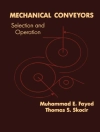Graph theory has strong historical roots in mathematics, especially in topology. Its birth is usually associated with the "four-color problem" posed by Francis Guthrie 1 in 1852, but its real origin probably goes back to the Seven Bridges of Konigsber * g 2 problem proved by Leonhard Euler in 1736. A computational solution to these two completely different problems could be found after each problem was abstracted to the level of a graph model while ignoring such irrelevant details as country shapes or cross-river distances. In general, a graph is a nonempty set of points (vertices) and the most basic information preserved by any graph structure refers to adjacency relationships (edges) between some pairs of points. In the simplest graphs, edges do not have to hold any attributes, except their endpoints, but in more sophisticated graph structures, edges can be associated with a direction or assigned a label. Graph vertices can be labeled as well. A graph can be represented graphically as a drawing (vertex=dot, edge=arc), but, aslongaseverypairofadjacentpointsstaysconnected by the same edge, the graph vertices can be moved around on a drawing without changing the underlying graph structure. The expressive power of the graph models placing a special emphasis on c- nectivity between objects has made them the models of choice in chemistry, physics, biology, and other ?elds.
Horst Bunke & Abraham Kandel
Applied Graph Theory in Computer Vision and Pattern Recognition [PDF ebook]
Applied Graph Theory in Computer Vision and Pattern Recognition [PDF ebook]
购买此电子书可免费获赠一本!
语言 英语 ● 格式 PDF ● ISBN 9783540680208 ● 编辑 Horst Bunke & Abraham Kandel ● 出版者 Springer Berlin Heidelberg ● 发布时间 2007 ● 下载 6 时 ● 货币 EUR ● ID 6319603 ● 复制保护 Adobe DRM
需要具备DRM功能的电子书阅读器












